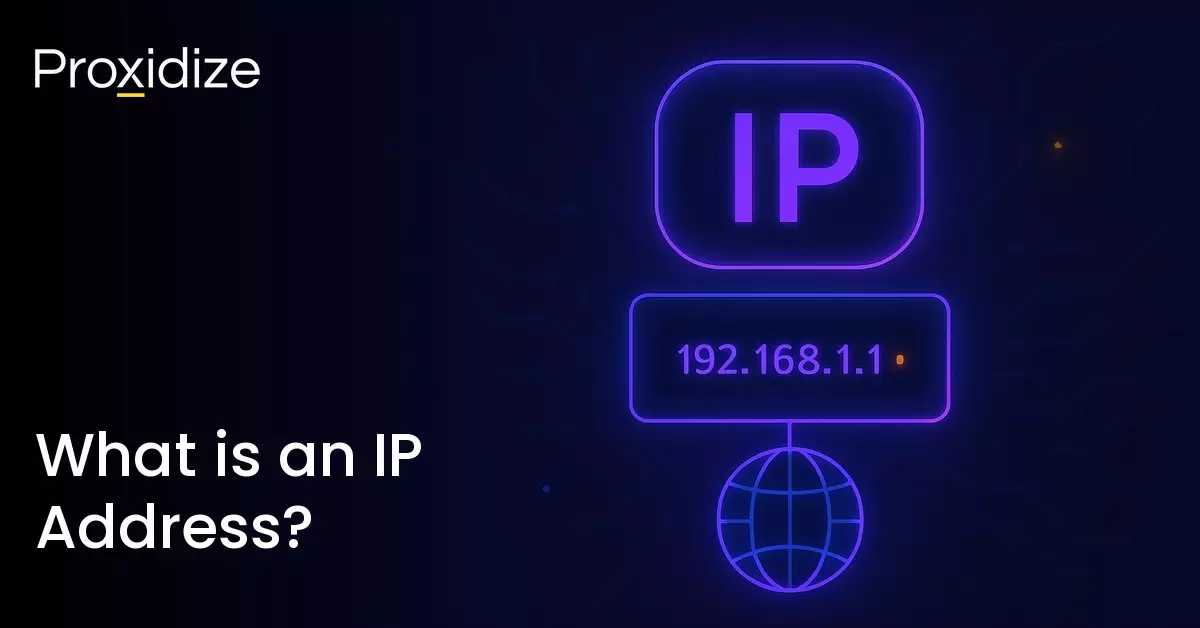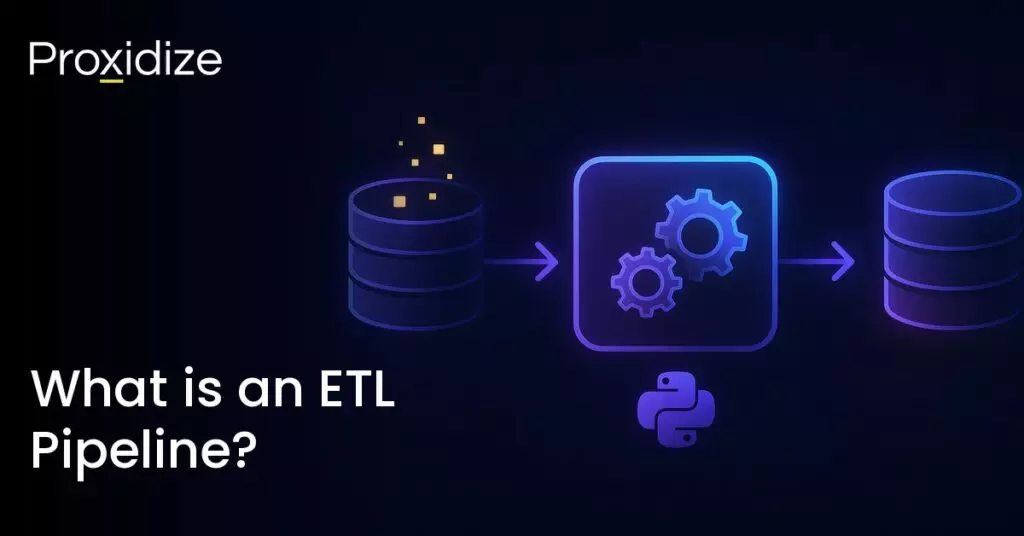An IP address is how you access the internet. That is the simple, bare bones way of explaining what it is. However, there is a lot more that goes into an IP address than just “accessing the internet”. There are different types of IP addresses, different parts to it, and its general purpose and functionality. This article aims to explore and explain what an IP address is, what are the different parts of it, the purpose and importance of it, and where you can find your IP address.
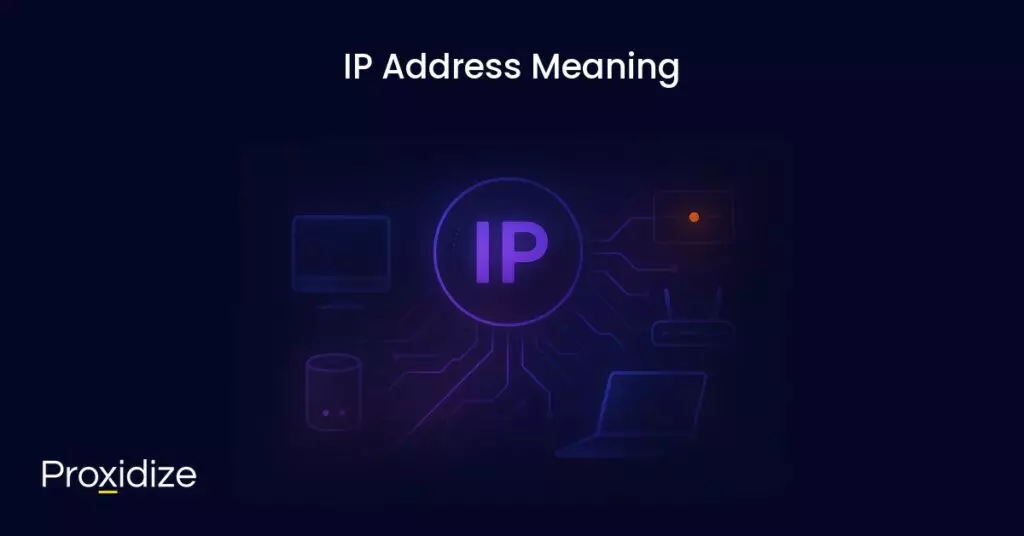
IP Address Meaning
An Internet Protocol (IP) address is a unique identifying number assigned to every device that is connected to the internet. It is a numeric label assigned to devices that use the internet to communicate. Each IP includes location details that make devices identifiable within a network which allows the internet to differentiate between computers, routers, and websites.
IPs have two distinct versions or standards, those being Internet Protocol version 4 (IPv4) and Internet Protocol version 6 (IPv6). IPv4 is the older of the two and has space for up to 4 billion addresses. IPv6 was created due to the overwhelming number of devices existing in the modern age. As such, IPv6 has space for trillions of IP addresses. Additionally, there are several types of IP addresses, including public, private, static, and dynamic IP addresses.
Each device with an internet connection has an IP address, from computers, laptops, Internet of Things (IoT) devices, and even some toys. The IP address enables the efficient transfer of data between two connected devices, allowing machines on different networks to communicate with each other. An IP address allows you to connect to the websites you visit, watch the videos you want, buy things online, do anything and everything that exists within the World Wide Web.
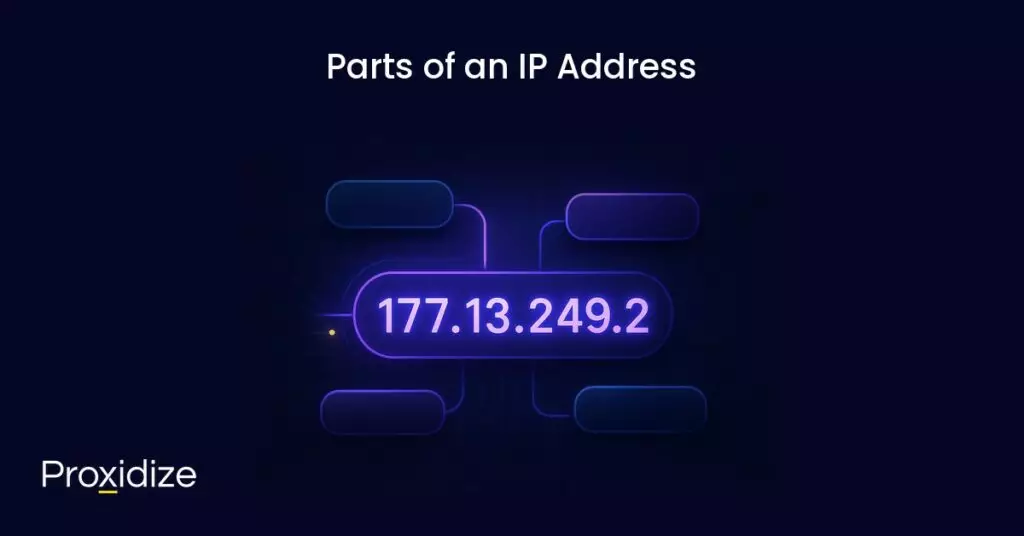
Parts of an IP Address
An IPv4 address is expressed as a set of four numbers. Each number in the set ranges from 0 to 255, meaning an IP can be anywhere from 0.0.0.0 to 255.255.255.255. These numbers are not random as they are mathematically produced and allocated by the Internet Assigned Numbers Authority (IANA), a division of the Internet Corporation for Assigned Names and Numbers (ICANN). For IPv6, it is actually eight groups of four hexadecimal digits with the groups separated by colons. An address could look something like 2540:0aba2:0s01:2066:1001:6c1d:d580:72b4.
As previously mentioned, an IP address consists of four numbers ranging from 0 to 255. With each address, you can see the network ID which is assigned to your network by your Internet Service Provider (ISP) as well as the host ID, the unique identifier assigned to each device connected to that specific network. As an example, let us say your IP address is 177.13.249.2. For each device in your network, the last number will be different to indicate the connection is directly attached to that device. Typically, the router will hold the .1 indicator while any other device connected to it will be attributed with the .2 or .3.
There are four different types of addresses, those being private, public, static, dynamic, dedicated IP and shared IP. Private addresses are given to the devices within your home or business where a private network is used. This allows these devices to communicate with each other without needing an internet connection. Public addresses are visible to anywhere connected to the same public network and can be easily accessed by other devices on the internet. Dynamic addresses are automatically generated and assigned via a Dynamic Host Configuration Protocol (DHCP). They can change each time they are connected to the internet but they have a traceable origin IP that can be monitored across various devices. Static IPs do not change and are assigned by network administrators.
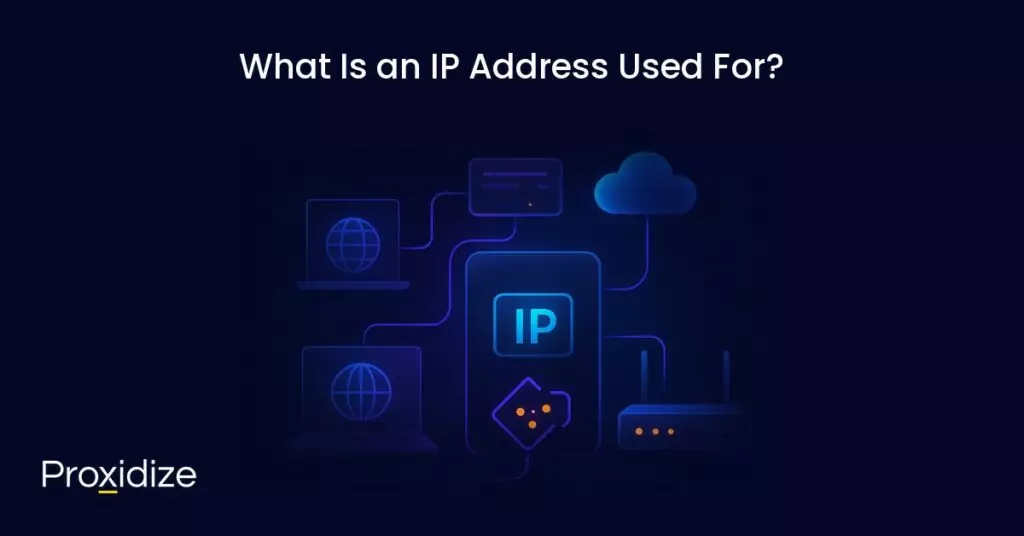
What Is an IP Address Used For?
IP addresses work as identifiers for each online device. They ensure you get the data you request such as search results, websites, and emails. Understanding how they work can help you make better decisions about online privacy. When you make a request online, the internet will know where to send that request thanks to your IP. When you type a search query into Google, the internet will retrieve that data and send it to your device.
IP addresses work by providing a label to each device that allows it to send and receive data packets according to TCP/IP protocols. Here is how IPs help facilitate network data transfers:
It starts with device initialization, wherein your device will connect to a network and prepare for communication. Then, your network router will assign separate IPs to each network device. When you enter a domain name, the DNS will translate it into a machine-readable address. This will allow your device to locate and communicate with the correct server on the internet. Data is then broken into packets with each one containing the source and destination IP.
These packets are then sent by the transmitting device and forwarded across the network. NAT will then modify the IP information in packet headers as data passes through a router, replacing the private IP with the router’s public IP. Routing will use the address to direct data packets between different networks while switching will handle traffic within a single network by using MAC addresses to route packets to specific devices. Data packets then arrive at the destination device or server. The destination may send a response or acknowledgement back to the source device.
Computers and any other internet-connected devices need these addresses to communicate with other online devices and networks. Without an IP address, the internet would not be able to send you the information you are looking for. There is a rumor that if someone has access to your IP address, they will be able to know exactly who you are, where you live, and all your credit card information. We have written an article dispelling the myths about what someone can do with your IP address.

What Is My IP Address?
If you are curious on where exactly to find your IP, this section will cover where you can find it on Windows, MacOS, iOS/Android, Linux, and Raspberry Pi devices.
How to Find IP Address on Windows
For Windows 11, follow these steps:
- Click “Start”, then “Settings”, then “Network & Internet”, and finally “Wi-Fi”.
- Select the network you are connected to and click on “Properties”.
- Scroll to the bottom and you should be able to see your IP next to “IPv4 Address”.
How to Find IP Address on Mac
- Select “System Settings” and head to “Network”.
- Click on “Wi-Fi” then “Details” and your IP will be on the bottom of the window that pops up.
How to Find IP Address on iPhone
- Go to the Settings application and click on “Wi-Fi”.
- Tap on the network you are connected to and your IP should be under IPv4.
How to Find IP Address on Android
- Go to the Settings application and click on “About Device”.
- Scroll all the way to the button and you will see the section “Device Identifiers” which includes your address.
How to Find IP Address on Linux
- Open the terminal and enter
hostname -Ito see your local IP.
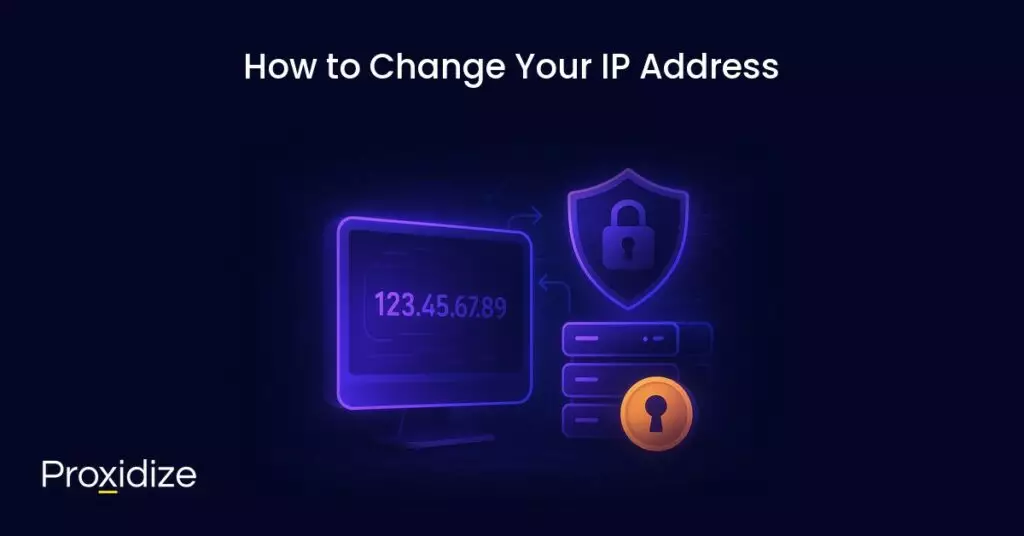
How to Change Your IP Address
There are several instances in which you might want to change or hide your IP address, ranging from privacy concerns and wanting to bypass an IP ban to scaling up your web scraping project or increasing the number of social media accounts you manage.
When you need access to a unique IP address or many IP addresses, proxies should be your first choice. They don’t add any encryption that might slow your connection down, they’re affordable, and readily available.
Another solution is using a VPN, although that means you’ll be sharing the VPN server’s IP address with many other people, which might not always be what you’re looking for. Check out our article on the difference between VPNs and proxies for a more in-depth explanation.
When you use a proxy, you’ll most likely access it via its proxy hostname rather than its IP address itself, which is helpful — it lets providers build in redundancies and make changes without affecting user experience.
When it comes to high-intensity web scraping, you’ll likely end up rotating your IP address frequently, to avoid getting rate limited. This can change your IP address after every request you make!
Conclusion
Understanding how an IP address works is helpful to navigating the modern internet. From the basics of public and private IP addresses to more advanced concepts like subnet masks, NAT firewalls, and CIDR notation, IPs offer so much more than just connecting to the internet.
They allow devices across local-area networks and massive data centers to connect seamlessly, whether you are using a classic Windows 98 machine or more complex systems like Google Cloud.
By learning the distinctions between static IP addresses, dynamically assigned addresses from a DHCP server, or even loopback IP addresses, you can make more informed decisions about connectivity, privacy, and security.
Key Takeaways:
- There are different types of IP addresses from dynamic to static to public and private, each with its own uses and functionalities.
- IPs are broken down into classes, binary bits, and even CIDR notations to define IPv4 address blocks.
- NAT firewalls, VPNs, and mobile proxies can protect against rate limits while also providing you with georestricted content.
- IPs go through a long journey to ensure you receive the information you requested.
- Finding your own IP can typically be done by checking the settings of the network you are connected to.
It is important to recognize the risks and opportunities tied to IPs. From avoiding an IP conflict or protecting against a DDoS attack to leveraging proxies, your IP plays a central role in both anonymity and accessibility.
Specialized setups such as dedicated IPs, automatic private addressing for link-local addresses, and multicast or broadcasting addressing show just how vast and flexible IPs can be. If you are hosting a server in a datacenter, experimenting with TCP, or even browsing the internet, understanding and managing an IP ensures a stable, secure, and adaptable digital experience.
Frequently Asked Questions
How to change IP address?
You can change your IP address in a few ways. Turning your router (or mobile data) on and off might force your IP address to rotate. You can also use a proxy server or VPN to route your traffic through another server, making your IP address appear to be the one from the proxy or VPN.
What is my public IP address?
You can find your public IP address by visiting websites such as WhatIsMyIPAddress or IP.me.
What is a static IP address?
A static IP address is a fixed and manually assigned IP that does not change. It provides a stable network identity for devices which makes it necessary for hosting services.
How to hide IP address?
You can hide your IP by using a proxy or a VPN. This will give you access to a different IP address than your own and allow you to send data packets through that IP instead of your original one.
How to ping an IP address?
To ping an IP, you can open the command-line interface and type ping followed by the target IP and pressing enter to send ICMP echo requests to the IP.
How to reset IP address?
There are two ways to reset an IP. You can unplug and replug your router which could provide you with a different IP or you can contact your ISP and request a different address.
How to find someone’s IP address?
You can find someone’s address either through their email headers, server logs, security monitoring systems, spam or abuse logs, or suspicious activity logs from EDR/IDS tools.
Can someone track my IP address?
Every website you visit can see your IP address, so visiting suspicious or malicious websites can expose your IP to bad actors. That being said, the only information someone can learn from your IP address is a general location of where that IP address is located (e.g. general province or city).
Is it illegal to hide my IP address?
No, it is not illegal to hide your IP.
Can I change my IP address location?
Yes you can. By using a proxy or a VPN, you can spoof your location by connecting to an IP from a different location.
Does my phone have an IP address?
Yes. Your phone’s IP has an address when it is connected to a WiFi network. It will be similar to the one on your computer or other device with only the last digit changed. Additionally, if you are connected to a 3G or 4G network, you will have an IP that is related to the closest cell tower to you. This address will be constantly changing and used by many other users in the area.
